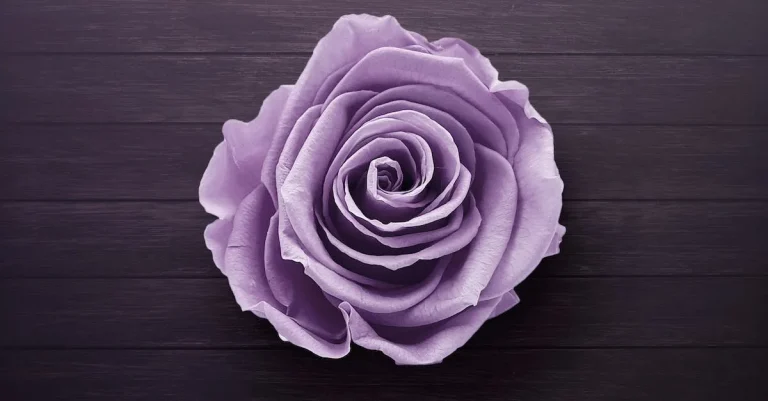With their elegant, trumpet-shaped blooms and sweet fragrance, lilies have captivated people for centuries. If you’re wondering about the deeper meaning and symbolism behind these popular flowers, you’ve come to the right place.
If you’re short on time, here’s a quick answer: Lily flowers symbolize purity, fertility, rebirth, and new beginnings. They are closely associated with the Virgin Mary in Christianity.
In this comprehensive guide, we’ll explore the rich spiritual history and significance of lilies in religion, myths and legends. We’ll uncover why they became such potent symbols of chastity and motherhood. We’ll also highlight their roles in ancient traditions and rituals.
By the end, you’ll understand exactly why lilies are viewed as harbingers of hope and light around the world.
The Role of Lilies in Religion and Spirituality
Lilies and the Virgin Mary
Lilies have a strong association with the Virgin Mary in Catholic symbolism and art. Their pure white flowers are said to represent Mary’s immaculate conception and purity. Legend says the Annunciation lilies bloomed when the Angel Gabriel appeared to Mary to tell her she would give birth to Jesus.
Paintings depicting the Annunciation often show Mary with lilies. Throughout history, the Madonna Lily became known as the “Annunciation Lily” due to this biblical story.
The Easter lily also became a symbol for the Virgin Mary, as its trumpet-shaped white flowers represent the resurrection of Christ. Tradition says the flowers bloomed from Eve’s tears after she was expelled from the Garden of Eden.
To Christians, this symbolizes Mary’s tears at the crucifixion and resurrection of Jesus – beautifully illustrating themes of sadness turning to hope and redemption.
Lilies in the Bible
In the Old Testament, lilies are mentioned as decorative carvings around the tops of columns in the design of King Solomon’s temple (1 Kings 7:19). The flowers frequently appear in scriptural metaphors for their pure beauty:
“Like a lily among the thorns is my darling among the maidens.” – Song of Songs 2:2
“Like lily flowers his lips nurture sweetness.”
– Ecclesiasticus 39:19
In the Sermon on the Mount, Jesus used the lilies of the field as an object lesson about the folly of worrying and chasing after material things. He said not even Solomon in all his glory was adorned as beautifully as the lilies (Matthew 6:28).
This teaches us to cherish simplicity and to trust God’s providence.
Lilies in Other Faiths and Traditions
The lotus flower is highly symbolic in various Eastern religions, including Hinduism and Buddhism. Though not botanically related to true lilies, lotuses still hold spiritual meaning representing rebirth, enlightenment, purity and detachment due to the flower’s growth in muddy swamps yet ability to emerge clean and produce beautiful blooms.
Chinese lore considers lilies a symbol for motherhood due to the flower’s fast propagation from bulbs to baby bulbs. The waxy white arum lily is a funeral flower for deceased mothers in China. It is known as “white bowing lady” in Chinese culture.
In feng shui and other spiritual traditions, lilies placed in entryways can deter negative energy and promote positive chi entering a space. Displaying lilies is thought to lift mood, enhance compassion and bring good luck. 😊 Their sweet floral scent can have calming effects as well.
Legends and Folklore Connected to Lilies
Greek and Roman Myths about Lilies
Lilies have been featured prominently in myths and legends across many ancient cultures. In Greek and Roman mythology, the lily was associated with several goddesses:
- Hera, the queen of the gods, was said to have spilled a few drops of milk while nursing Heracles, creating the Milky Way galaxy and the lily flower.
- Aphrodite, the goddess of love and beauty, considered the white lily her sacred flower as it represented purity and chastity.
- Demeter, the goddess of agriculture and harvest, is often depicted wearing a crown of lilies representing life and rebirth.
One origin story of the lily is that it sprung up from the blood drops of the Greek god Adonis when he was attacked by a wild boar. The tears of Aphrodite also watered the ground to grow lilies after his death.
Lilies in Asian Traditions
In Chinese culture, lilies symbolize summer and abundance. Buddhist scriptures state that Guanyin, their goddess of mercy, sends white lilies to welcome the souls of deceased women to heaven.
Lilies play an important symbolic role in Hindu worship as well. Particularly, the role of lilies in worshipping the gods Vishnu and Lakshmi for marital happiness and prosperity is significant.
Across Japan, Malaysia, and Korea, the tiger lily and lantern lilies are believed to ward off evil spirits and demons. They are used in various rituals and ceremonies even today.
The Easter Lily Legend
Christian legends say that lilies originated in the Garden of Eden as Eve’s tears after she was banished fell to the ground. Another popular story is about the archangel Gabriel sending a golden-petaled lily to the Virgin Mary to announce that she would give birth to Jesus.
The most famous legend though is that of the Easter Lily signifying Jesus Christ’s resurrection. It is said that beautiful white lilies sprouted from the ground where drops of Jesus’ sweat fell while praying at Gethsemane before his death.
Today, the Easter Lily remains a famous symbol commemorating Christ’s resurrection 3 days after Good Friday.
Key Symbolic Meanings of Lilies
Purity and Chastity
With their elegant, trumpet-shaped blooms and sweet fragrance, lilies have long been regarded as symbolic of purity and chastity. In ancient Greek myths, lilies were closely associated with Hera, the queen of the gods and the goddess of marriage and birth.
The lily’s bright white color came to represent the purity and innocence of the Virgin Mary in Christian symbolism.
Fertility and Motherhood
Historically, lilies were seen as symbols of fertility and motherhood in many cultures. In ancient China and Japan, pictures and carvings of lilies were gifted to newly married couples to bring children into the marriage.
This may be because many lily varieties propagate through bulbs that produce baby bulbs, reflecting themes of new life and regeneration. Today, lilies remain a popular flower gift for new mothers.
Lilies are still commonly used in weddings, with the white lily symbolizing purity and fertility, while other colorful hybrid lilies represent passion and vitality for the couple starting a new life together.
Rebirth and Renewal
With their perennial life cycle, lilies also embody themes of cyclical regeneration, rebirth, and renewal. In ancient Egyptian belief, the lily rising from the primordial waters represented the first life emerging from the chaos at the dawn of creation.
This symbolism carried into Christianity with the Easter lily coming to celebrate Jesus’ resurrection.
Across Europe, lilies are still associated with springtime and used in religious celebrations and festivals marking the renewal of life after winter every year. The droplets of nectar on many lilies resembling glistening dew drops also link them to fresh starts and new beginnings.
New Beginnings and Fresh Starts
As discussed above under rebirth and renewal, lilies powerfully evoke themes of new beginnings and fresh starts in many cultures. Whether rising again every spring or starting the new journey of life as a seedling, the lily flower’s symbolism captures a sense of optimism, promise, and hope for the future.
In the language of flowers, giving a bouquet of stargazer lilies symbolically conveys wishes for prosperity and good fortune in the next chapter of the recipient’s life.
| Lily Variety | Specific Meaning |
|---|---|
| Calla Lily | Magnificence and beauty |
| Lily of the Valley | Sweetness, humility, renewal of spring |
| Water Lily | Purity of heart, focus, enlightenment |
To explore more on the rich cultural and symbolic history of lilies, visit the websites of the Flower Meaning Guide or Teleflora.
The Cultural Significance of Lily Flowers
Lilies at Weddings
Lilies have a long-standing association with weddings in many cultures. Their bright white blooms symbolize purity and new beginnings, making them a popular choice for brides’ bouquets and wedding ceremonies. For example, calla lilies were used in ancient Greek and Roman weddings to represent beauty.
Today, elegant white lilies like Casablanca and oriental varieties continue to be wedding staples.
In Chinese culture, lilies also play an important symbolic role for newly married couples. Gifting lilies is said to ensure a happy union filled with children. The dragon and tiger lily specifically represent yin and yang coming together in joyful harmony.
With their pleasant fragrance and stately blooms, it’s no wonder lilies remain a top floral pick for nuptials around the world.
Lilies for Funerals and Memorials
While lilies feature in happy ceremonies like weddings, they also carry solemn meaning associated with death and memorializing loved ones across cultures. In Christianity, white stargazer lilies specifically represent the resurrection of Christ and hope of life after death.
Their trumpet-shaped flowers symbolize the call to restoration and renewal in the afterlife.
Additionally, many hybrid lily varieties bloom around Easter religious observances. This further connects them to concepts like sacrificial death and eternal life in Christian theology. Beyond Christianity, lilies are often used in funeral wreaths and flower arrangements to honor the deceased.
Their bipartisan ties with both marriage and death reflect the full circle of life’s beauty.
Lilies as National Symbols
Several countries have adopted various lily species as part of their national identity and symbols. For instance, the lotus lily appears on the coat of arms of Macau. And the stylized fleur-de-lis lily is a classic symbol of French royalty, featured on flags and emblems across French history.
Below is a comparison of a few national flowers from the lily family:
| Country | National Lily Flower | Meaning |
| Italy | Lilium candidum | Purity |
| Korea | Hibiscus syriacus | Noble, steadfast spirit |
As symbols of nobility, honor, and transitional phases of life, it’s clear why lilies hold such deep cultural meaning across history and geography.
Conclusion
With their pure white color, elegant blooms and sweet scent, it’s easy to see why lilies have been revered for thousands of years as symbols of chastity, motherhood, rebirth and new beginnings.
Throughout history and across cultures, these flowers have played prominent roles in religious texts, myths and traditions. They became linked with gods and goddesses, and infused with profound spiritual meaning.
So the next time you receive or give lilies, remember the age-old symbolism and rich lore carried by their delicate petals. Let these unique flowers remind you of the purity, hope and beauty they represent in this world.






